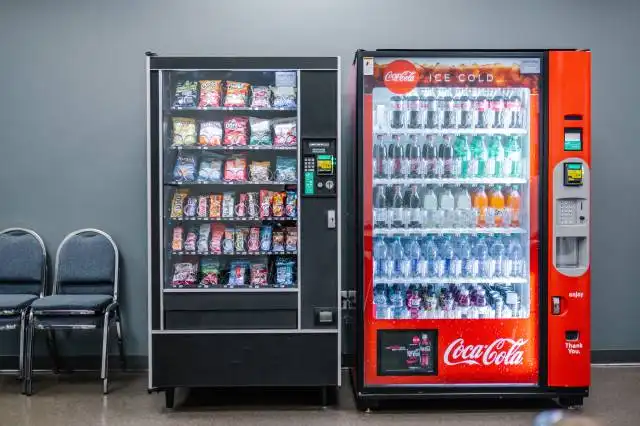Start a Frozen Yogurt Business
Your FroYo Empire: Crafting Unique Concoctions for Dessert Lovers Everywhere
| Updated


FROZEN YOGURT BUSINESS
Welcome to the sweet and refreshing world of the frozen yogurt business, an industry that exists to churn out delectable and healthier dessert alternatives! Imagine being the master behind unique flavors and toppings that challenge taste buds and keep customers coming back for more! The crux of this enterprise lies in selling self-service frozen yogurt, complemented by a customizable toppings bar - a concept that allows consumers to mix, blend, and revel in creative delight. Step into this lucrative business and let your entrepreneurial adventure be as delightful as a swirl of tasty frozen yogurt!
Jump to Business Plan
RELATED BUSINESS IDEAS
Browse ALL Food & Beverage Entrepreneurship Business Ideas
Discover Your Perfect Domain
Unlock the door to your online success with our hand-picked selection of premium domain names. Whether you're starting a new venture or rebranding an existing one, the right domain can set the tone for your digital presence. Browse through our curated list, each with its unique potential to enhance your brand's visibility and credibility.
FROZEN YOGURT MINI BUSINESS PLAN
This a quick reality check to help you identify the strengths and weaknesses of your business concept before you dive in.
Business Analysis: Frozen Yogurt Shop
Expected Percent Margins
- Gross Margin: ~75-80%
- Net Profit Margin: ~10-20%
Earnings Expectations
- Daily Earnings: $500 - $1000
- Weekly Earnings: $3500 - $7000
- Monthly Earnings: $14,000 - $28,000
- Annual Earnings: $168,000 - $336,000
Actions to Achieve Numbers
Inventory Management:
- Initial Investment: Anticipate an initial investment ranging from $20,000 - $40,000 for equipment and inventory.
Marketing and Customer Acquisition:
- Social Media: Engage your audience with 3-5 posts per week across popular platforms.
- Promotions/Discounts: Implement a loyalty rewards program and offer regular discounts to encourage repeat business.
Sales and Customer Experience:
- Staffing: Hire friendly, customer-oriented staff with a passion for frozen yogurt.
- Product Variation: Offer a variety of flavors and toppings to cater to a wide range of customer preferences.
Cost Control:
- Rent: Aim to negotiate a rent agreement that is no more than 10% of your expected monthly income.
Business Operations:
- Operating Hours: Be open 7 days a week, with extended hours during warmer months or local events.
- Customer Volume: Aim to serve at least 50-100 customers a day, with an average spend of $10 per customer.
Please remember that these are broad estimates and the real figures will depend on a variety of factors including the shop's location, competition, your marketing efforts, and the demand for frozen yogurt in your locality. Be sure to make a detailed business plan and consult with a financial advisor.
NOT WHAT YOU HAD IN MIND? Here are more ideas



Browse ALL Food & Beverage Entrepreneurship Business Ideas
Grab Your Business Website Name
Before you get caught up in the whirlwind of setting up your business, invest in a domain name. It's a small but significant step that lays the foundation for your brand and makes it easier for customers to find and trust you. Just like you wouldn't build a house without securing the land first, don't build a business without securing your domain name.
"Why? Can't that wait?" Here's why it shouldn't
Step 1: Determine if Starting a Frozen Yogurt Business is Right for You
Breakdown of Startup Expenses
Before starting a frozen yogurt business, it is important to determine the startup costs associated with the venture. This includes the cost of the yogurt machines, the cost of the yogurt ingredients, the cost of the yogurt cups, spoons, and other supplies, the cost of any necessary licenses or permits, and the cost of any marketing materials. Additionally, it is important to factor in the cost of rent for the space, the cost of any necessary renovations, and the cost of any equipment needed to operate the business.
Breakdown of Ongoing Expenses
After the startup costs are taken into account, it is important to consider the ongoing expenses associated with running a frozen yogurt business. This includes the cost of the yogurt ingredients, the cost of the yogurt cups, spoons, and other supplies, the cost of any necessary licenses or permits, and the cost of any marketing materials. Additionally, it is important to factor in the cost of rent for the space, the cost of any necessary renovations, and the cost of any equipment needed to operate the business.
Examples of Ways to Make Money
Once the startup and ongoing expenses are taken into account, it is important to consider ways to make money with a frozen yogurt business. This includes selling frozen yogurt and other frozen desserts, offering catering services, offering delivery services, and partnering with other businesses to offer discounts or promotions. Additionally, it is important to consider offering loyalty programs, hosting special events, and offering discounts for large orders. Additionally, it is important to consider offering online ordering and delivery services to increase sales.
Step 2: Name Your Business
When it comes to naming your business, it's important to choose a name that is memorable and reflects the type of business you are running. It should also be easy to pronounce and spell. Consider using words that evoke a feeling or emotion, such as joy, fun, or excitement. Additionally, make sure to check that the name you choose is not already taken by another business. You can do this by searching online or by contacting your local business registration office.
Register Your Business Name
Once you have chosen a name for your business, you will need to register it with the appropriate government agency. This will ensure that your business name is legally protected and that no one else can use it. Depending on the type of business you are running, you may need to register your business name with the state or federal government. Additionally, you may need to register your business name with your local county or city government. Once you have registered your business name, you will be able to use it on all of your business documents, such as contracts, invoices, and business cards.
Step 3: Create a Business Plan
Creating a business plan is an important step in the process of starting a frozen yogurt business. A business plan should include an executive summary, a description of the business, a market analysis, an organizational plan, a financial plan, and a description of the products and services offered.
The executive summary should provide an overview of the business, including the mission statement, the goals of the business, and the strategies for achieving those goals. It should also include a description of the target market, the competitive advantage the business has, and the expected return on investment.
The description of the business should include the legal structure of the business, the location of the business, and the ownership structure. It should also include a description of the products and services offered, the pricing structure, and the marketing strategies.
The market analysis should include an analysis of the current market trends, the potential customer base, and the competition. It should also include a description of the target market and the strategies for reaching that market.
The organizational plan should include the organizational structure of the business, the roles and responsibilities of each team member, and the methods of communication between team members. It should also include a description of the management team and the strategies for managing the business.
The financial plan should include a breakdown of the startup costs, the ongoing costs, and the expected return on investment. It should also include a description of the sources of financing and the strategies for managing the finances of the business.
Finally, the description of the products and services offered should include a description of the types of frozen yogurt products offered, the pricing structure, and the strategies for marketing the products.
Step 4: Obtain Funding
When starting a business, it is important to consider the various sources of funding available. Depending on the size of the business, the amount of funding needed, and the type of business, there are several options to consider. For example, if the business is small, the owner may choose to use personal savings or a loan from a family member or friend. For larger businesses, the owner may choose to apply for a loan from a bank or other financial institution. Additionally, the owner may consider seeking venture capital or angel investors.
Cost of Funding
When obtaining funding for a business, it is important to consider the cost of the funding. Depending on the source of the funding, there may be different costs associated with it. For example, if the business owner chooses to use personal savings, there may be no cost associated with the funding. However, if the business owner chooses to use a loan from a bank or other financial institution, there may be interest and other fees associated with the loan. Additionally, if the business owner chooses to seek venture capital or angel investors, there may be equity or other costs associated with the funding.
Benefits of Funding
When obtaining funding for a business, there are several benefits to consider. For example, obtaining funding can provide the business with the necessary capital to start or expand the business. Additionally, obtaining funding can provide the business with the resources to hire additional staff or purchase additional equipment. Furthermore, obtaining funding can provide the business with the ability to take advantage of new opportunities or to invest in new technologies. Finally, obtaining funding can provide the business with the ability to increase its marketing efforts and reach a larger customer base.
Step 5: Choose a Location
When choosing a location for a frozen yogurt business, there are several factors to consider. First and foremost, the location should be in a high-traffic area, such as a shopping mall, busy street corner, or tourist area. It should also be in a place where there is not a lot of competition from other frozen yogurt businesses. Additionally, the location should be accessible to customers and have enough space for customers to comfortably enjoy their frozen yogurt. Finally, the location should have adequate parking for customers.
Researching Potential Locations
Once you have identified potential locations, it is important to research each one thoroughly. This includes researching the local demographics and customer base, as well as the cost of leasing or purchasing the property. Additionally, it is important to research the local zoning laws and regulations to ensure that the business is in compliance. Finally, it is important to research the local competition to ensure that the business will be successful.
Step 6: Obtain Necessary Licenses and Permits
When starting a frozen yogurt business, it is important to obtain the necessary licenses and permits. Depending on the state, city, and county, the types of licenses and permits needed may vary. Generally, a business license, a health permit, and a food service permit are required. Additionally, a seller’s permit may be needed if the business will be selling products to customers. The business may also need to register with the state’s Department of Revenue.
Where to Obtain Licenses and Permits
The licenses and permits needed to start a frozen yogurt business can be obtained from the local government. Depending on the area, the business may need to contact the county clerk’s office, the city clerk’s office, or the state’s Department of Revenue. It is important to research the specific requirements for the area to ensure that all necessary licenses and permits are obtained.
Cost of Licenses and Permits
The cost of the licenses and permits needed to start a frozen yogurt business will vary depending on the area. Generally, the cost of the licenses and permits will be a few hundred dollars. Additionally, the business may need to pay a fee to register with the state’s Department of Revenue. It is important to research the cost of the licenses and permits before starting the business.
Renewal of Licenses and Permits
Most licenses and permits will need to be renewed on an annual basis. The cost of renewal will vary depending on the area. Additionally, the business may need to pay a fee to renew the registration with the state’s Department of Revenue. It is important to research the renewal requirements for the area to ensure that the licenses and permits are kept up to date.
Step 7: Purchase Equipment
When starting a frozen yogurt business, there are several pieces of equipment that are necessary for success. These include a commercial refrigerator, a commercial freezer, a yogurt machine, a topping bar, and a cash register. All of these pieces of equipment are necessary for a successful frozen yogurt business.
Cost of Equipment
The cost of the equipment can vary greatly depending on the type and quality of the equipment. Generally, the cost of the equipment can range from a few hundred dollars to several thousand dollars. It is important to research the different types of equipment available and compare prices to ensure that you are getting the best deal.
Financing Options
There are several financing options available for those who are looking to purchase equipment for their frozen yogurt business. These include traditional bank loans, small business loans, and leasing options. It is important to explore all of the financing options available to ensure that you are getting the best deal.
Maintenance
It is important to remember that the equipment purchased will need to be maintained in order to ensure that it is running properly. This includes regular cleaning and maintenance of the equipment. It is important to research the different types of maintenance that are necessary for the equipment and to ensure that it is done on a regular basis.
Step 8: Market Your Business
Social Media When starting a frozen yogurt business, it is important to establish a presence on social media. This can be done by creating accounts on popular platforms such as Facebook, Instagram, and Twitter. By creating an account, you can post updates about your business, including new flavors, special offers, and other promotions. Additionally, you can use social media to interact with customers and build relationships with them.
Word of Mouth Word of mouth is one of the most powerful marketing tools available. Encourage customers to spread the word about your business by offering incentives such as discounts or free samples. You can also host events and invite local influencers to help spread the word about your business.
Advertising Advertising is another great way to market your business. You can advertise in local newspapers, magazines, or radio stations. Additionally, you can create flyers and distribute them in the local area. You can also create a website for your business and use search engine optimization (SEO) to help customers find your business online.
Networking Networking is an important part of marketing your business. Attend local events and meet other business owners in the area. This will help you build relationships and gain more customers. Additionally, you can join local business groups and participate in online forums to help spread the word about your business.
Step 9: Monitor Your Business
Examples of How to Monitor Your Business
Track Your Sales It is important to track your sales to ensure that your business is profitable. You can use software such as QuickBooks or Excel to track your sales and expenses. Additionally, you can use customer feedback to gauge customer satisfaction and make adjustments to your business accordingly.
Monitor Your Competition It is important to keep an eye on your competition and see what they are doing. You can do this by attending their events, reading their reviews, and keeping up with their promotions. This will help you stay ahead of the competition and make sure your business is successful.
Analyze Your Data Analyzing your data is an important part of monitoring your business. You can use data analysis tools such as Google Analytics to track website traffic, customer behavior, and other metrics. This will help you identify areas of improvement and make adjustments to your business accordingly.
Evaluate Your Progress It is important to evaluate your progress and make sure your business is on track. You can do this by setting goals and tracking your progress towards those goals. Additionally, you can use customer feedback to gauge customer satisfaction and make changes to your business accordingly.
Step 9: Open Your Doors
Introduction: Opening day is an exciting time for any business. For a frozen yogurt business, it’s especially important to make sure everything is in order and that customers have a great experience. Here are some tips to ensure that your opening day is a success.
Promote Your Business: Before opening day, it’s important to promote your business. This can be done through traditional advertising, such as newspaper ads and radio spots, as well as through social media. Make sure to create a website and social media accounts to let potential customers know about your business. You can also create flyers or postcards to distribute in the local area.
Have a Grand Opening: Having a grand opening is a great way to draw attention to your business and get people excited about it. Consider having a ribbon-cutting ceremony and offering special discounts or promotions to customers who attend. You can also have a special event, such as a tasting or a contest.
Train Your Staff: Before opening day, make sure that your staff is properly trained. They should understand the menu, the ordering process, and the customer service policies. Make sure to have a plan in place for dealing with any customer complaints or issues that may arise.
Stock Your Supplies: On opening day, make sure that you have all the necessary supplies, such as cups, spoons, and napkins. You should also have enough frozen yogurt mix and other ingredients on hand to meet customer demand.
Test Your Equipment: Before opening day, make sure to test all of your equipment to ensure that it is working properly. This includes the yogurt machines, the cash registers, and any other equipment you may be using.
Have a Backup Plan: It’s important to have a backup plan in case something goes wrong on opening day. Make sure to have a contingency plan in place in case you run out of supplies or if your equipment fails.
Finally: Opening day is an exciting time for any business, and it’s important to make sure that everything is in order. By following these tips, you can ensure that your frozen yogurt business has a successful opening day.
EXPLORE MORE CATEGORIES
Browse ALL Business Idea Categories
TAKE THE NEXT STEPS









